Magnesium Oxide Production by Plasma Chemical Conversion from Fluorine-Containing Industrial Waste
Abstract
:1. Introduction
2. Materials and Methods
3. Results and Discussion
- The steam-plasma gasification process is not sensitive to the humidity of the treated materials;
- Steam plasma is not explosive;
- No chemical reagent solutions are required for the leaching, sedimentation, and washing of sediments, thus reducing the formation of liquid waste; the actions to minimize environmental damage are thus reduced.
4. Conclusions
- Thermogravimetric analysis of magnesium fluoride showed that the melting process of magnesium fluoride occurs at a temperature range from 1080.73 °C to 1260.54 °C;
- The results of X-ray diffractometry testify to high efficiency of the process of plasma-chemical conversion of magnesium fluoride to magnesium oxide and the exclusion of intermediate magnesium oxyfluorides formation;
- It is shown that the method of briquetting of powder with a fraction of ≤75 µm can be used to improve the homogeneity of the plasma-chemical process of MgF2 decomposition. To briquette magnesium fluoride powder, an aqueous solution of polyvinyl alcohol was used as a binder;
- It is shown that by using the plasma-chemical method of magnesium fluoride processing, it is possible to obtain magnesium oxide with main substance content of 99 % and hydrogen fluoride. Magnesium oxide has characteristics which meet the requirements of GOST 4526 “Magnesium oxide”. Technical requirements of “Pure” grade, suitable for use in the electrical industry, as well as for the manufacture of refractory material used in the metallurgical industry.
Author Contributions
Funding
Institutional Review Board Statement
Informed Consent Statement
Data Availability Statement
Conflicts of Interest
References
- Naboychenko, S.S.; Murashova, I.B.; Neikov, O.D. Production of Rare Metal Powders, 2nd ed.; Elsevier: Amsterdam, The Netherlands, 2009; pp. 485–537. [Google Scholar]
- Lisitsyna, L.A.; Popov, A.I.; Karipbayev, Z.T.; Mussakhanov, D.A.; Feldbach, E. Luminescence of MgF2-WO3 ceramics synthesized in the flux of 1.5 MeV electron beam. Opt. Mater. 2022, 133, 112999. [Google Scholar] [CrossRef]
- Popov, A.I.; Elsts, E.; Kotomin, E.A.; Moskina, A.; Karipbayev, Z.T.; Makarenko, I.; Pazylbek, S.; Kuzovkov, V.K. Thermal annealing of radiation defects in MgF2 single crystals induced by neutrons at low temperatures. Nucl. Instrum. Methods Phys. Res. Sect. B Beam Interact. Mater. At. 2020, 480, 16–21. [Google Scholar] [CrossRef]
- Kylyshkanov, M.K.; Shestakov, K.A.; Sagdoldina, Z.B.; Rakhadilov, B.K.; Kengesbekov, A.B. Processing of industrial waste by plasma-chemical method. Bull. Univ. Karaganda 2021, 3, 45–51. [Google Scholar] [CrossRef]
- Kylyshkanov, M.K.; Shestakov, K.A.; Sagdoldina, Z.B.; Abdulina, S.A.; Rakhadilov, B.K. Assessment of thermodynamic parameters of the plasma chemical process for magnesium oxide production. Eurasian J. Phys. Funct. Mater. 2022, 6, 151–158. [Google Scholar] [CrossRef]
- Bhatt, K.P.; Patel, S.; Upadhyay, D.S.; Patel, R.N. A Critical Review on Solid Waste Treatment using Plasma Pyrolysis Technology. Chem. Eng. Process. Process Intensif. 2022, 177, 108989. [Google Scholar] [CrossRef]
- Messerle, V.E.; Mossé, A.L.; Paskalov, G.; Sitdikov, Z.Z.; Ustimenko, A.B. Plasma Chemical Conversion of Spent Lubricating Materials. J. Eng. Phys. Thermophys. 2021, 94, 1344–1356. [Google Scholar] [CrossRef]
- Messerle, V.E.; Mossé, A.L.; Ustimenko, A.B.; Slavinskaya, N.A.; Sitdikov, Z.Z. Recycling of Organic Waste in a Plasma Reactor. J. Eng. Phys. Thermophys. 2020, 93, 987–997. [Google Scholar] [CrossRef]
- Li, J.; Liu, K.; Yan, S.; Li, Y.; Han, D. Application of thermal plasma technology for the treatment of solid wastes in China: An overview. Waste Manag. 2016, 201658, 260–269. [Google Scholar] [CrossRef] [PubMed]
- Rakhadilov, B.K.; Kenesbekov, A.B.; Kowalevski, P.; Ocheredko, Y.A.; Sagdoldina, Z.B. Development of air-plasma technology for hardening cutting tools by applying wear-resistant coatings. News Natl. Acad. Sci. Repub. Kazakhstan Ser. Geol. Tech. Sci. 2020, 3, 54–62. [Google Scholar] [CrossRef]
- Chu, P.K.; Lu, X. Low Temperature Plasma Technology: Methods and Applications, 2nd ed.; Taylor and Francis: London, UK, 2013; 493p. [Google Scholar]
- Sikarwar, V.S.; Hrabovský, M.; Van Oost, G.; Pohořelý, M.; Jeremiáš, M. Progress in waste utilization via thermal plasma. Prog. Energy Combust. Sci. 2020, 81, 100873. [Google Scholar] [CrossRef]
- Arinov, B.Z.; Kening, V.K. Studies on integrated processing of beryllium-containing concentrates using the plasma chemical method. In Proceedings of the International Scientific and Technical Conference “Innovative Technologies and Projects in the Mining and Metallurgical Complex”, Almaty, Kazakhstan, 18–19 March 2014. (In Russian). [Google Scholar]
- Kazakhstan Patent Database. Available online: https://kzpatents.com/4-ip31040-sposob-pererabotki-ftorsoderzhashhih-berillievyh-koncentratov.html (accessed on 17 September 2007). (In Russian).
- Du Plessis, W.; Pienaar, A.D.; Postma, C.J.; Crouse, P.L. Effect of the value of x in NH4F·xHF on the digestion of plasma-dissociated zircon. Int. J. Miner. Process. 2016, 147, 43–47. [Google Scholar] [CrossRef] [Green Version]
- Warne, S.S.; Gallagher, P.K. Thermomagnetometry. Thermochim. Acta 1987, 110, 269–279. [Google Scholar] [CrossRef]

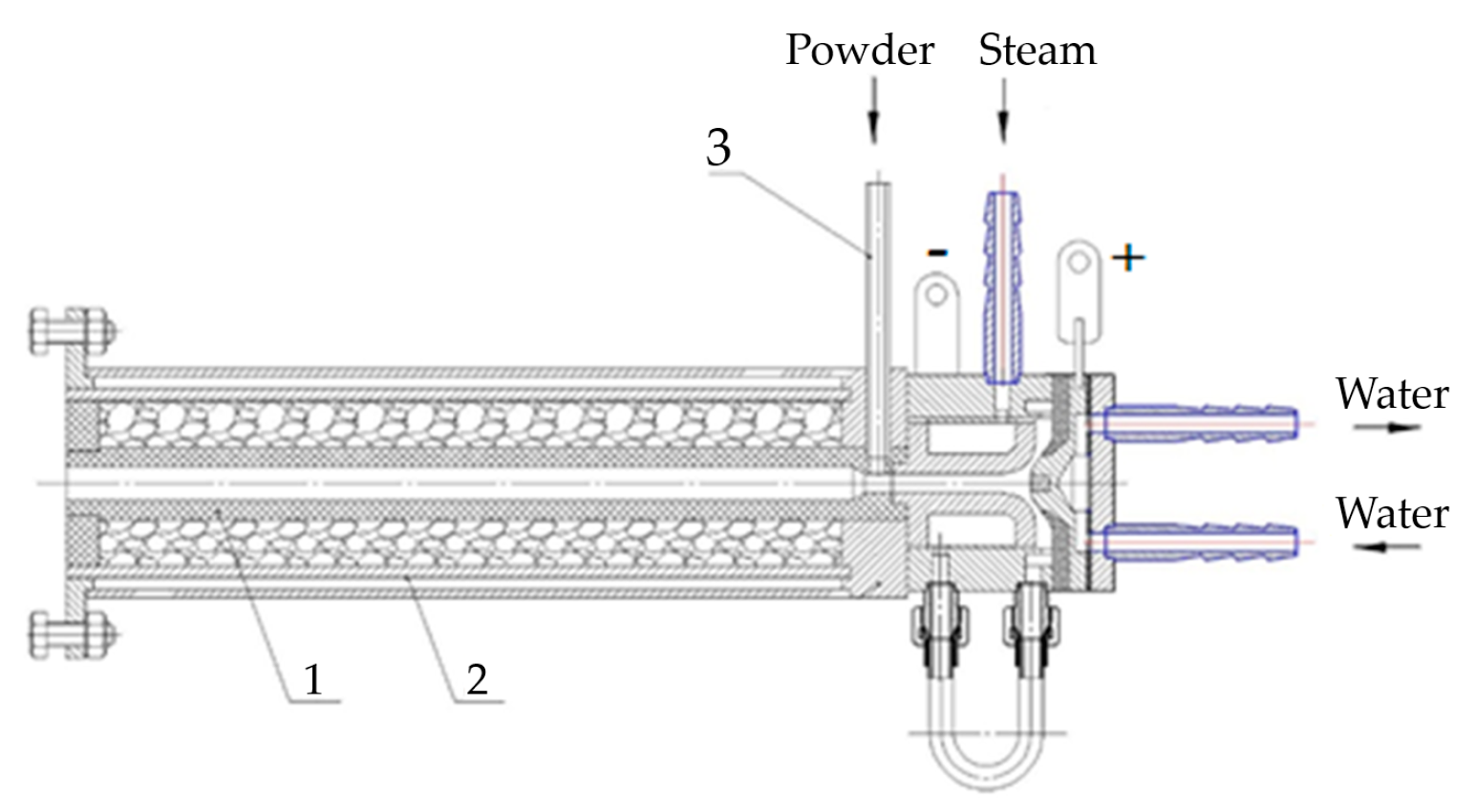
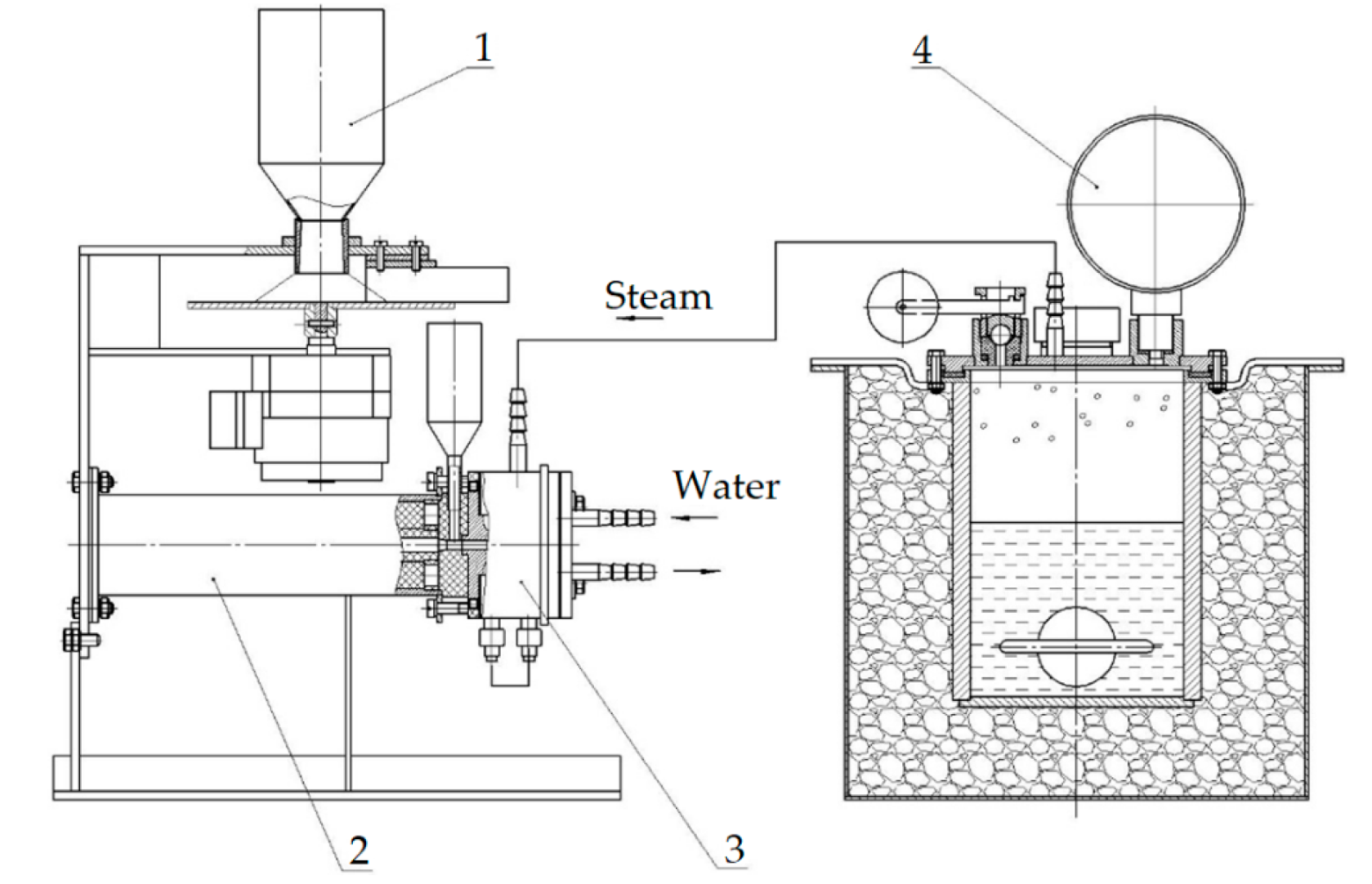


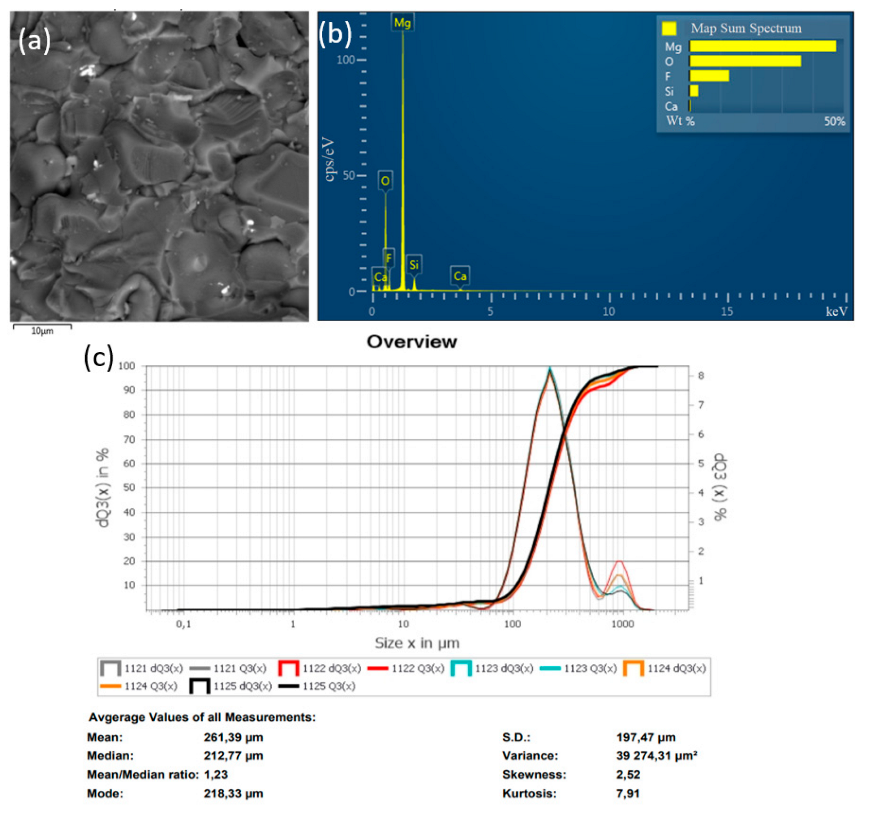
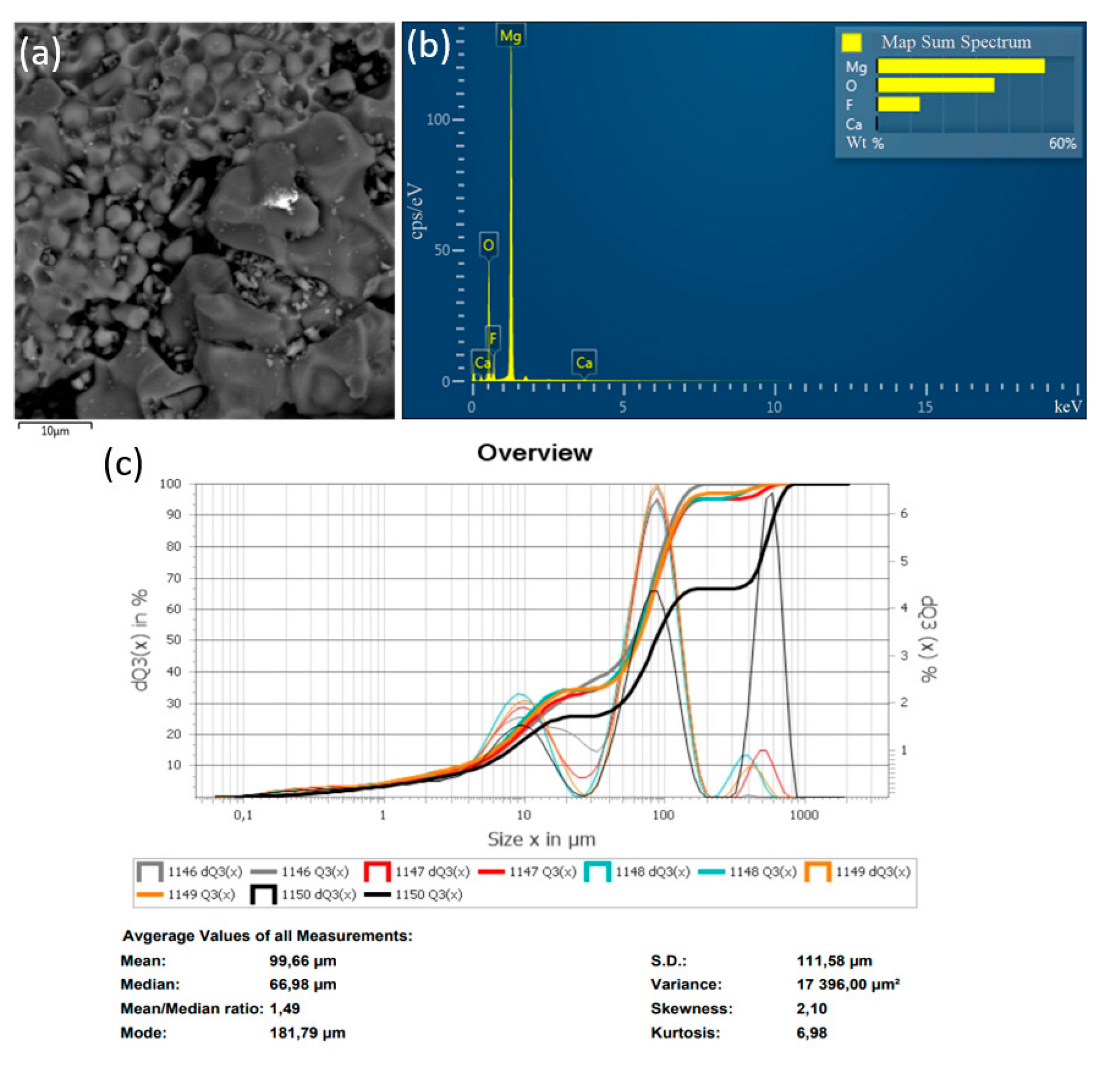



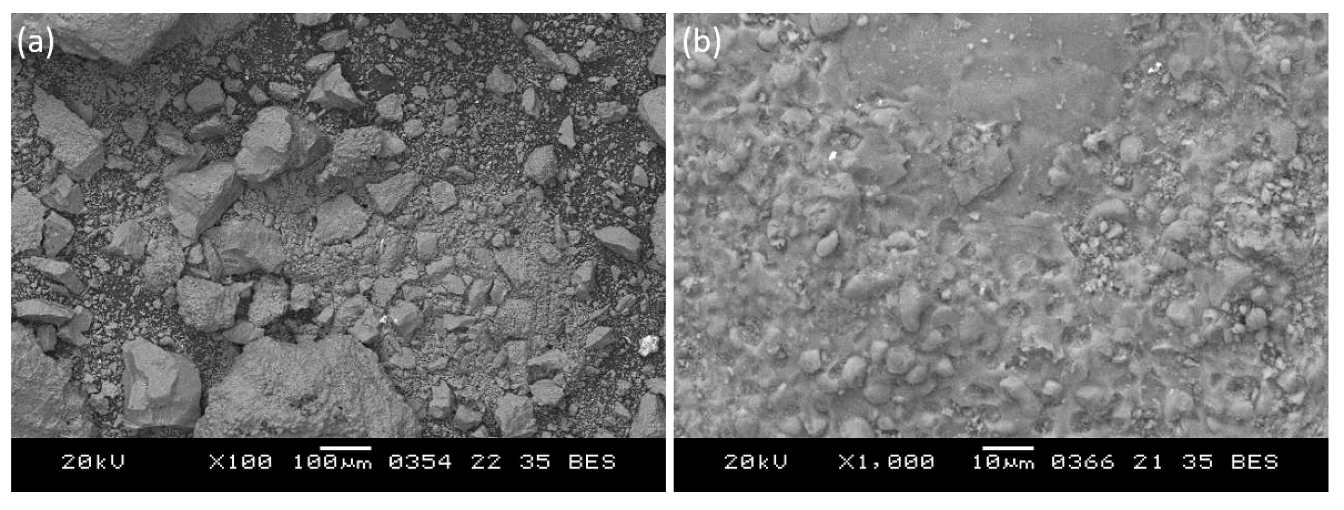
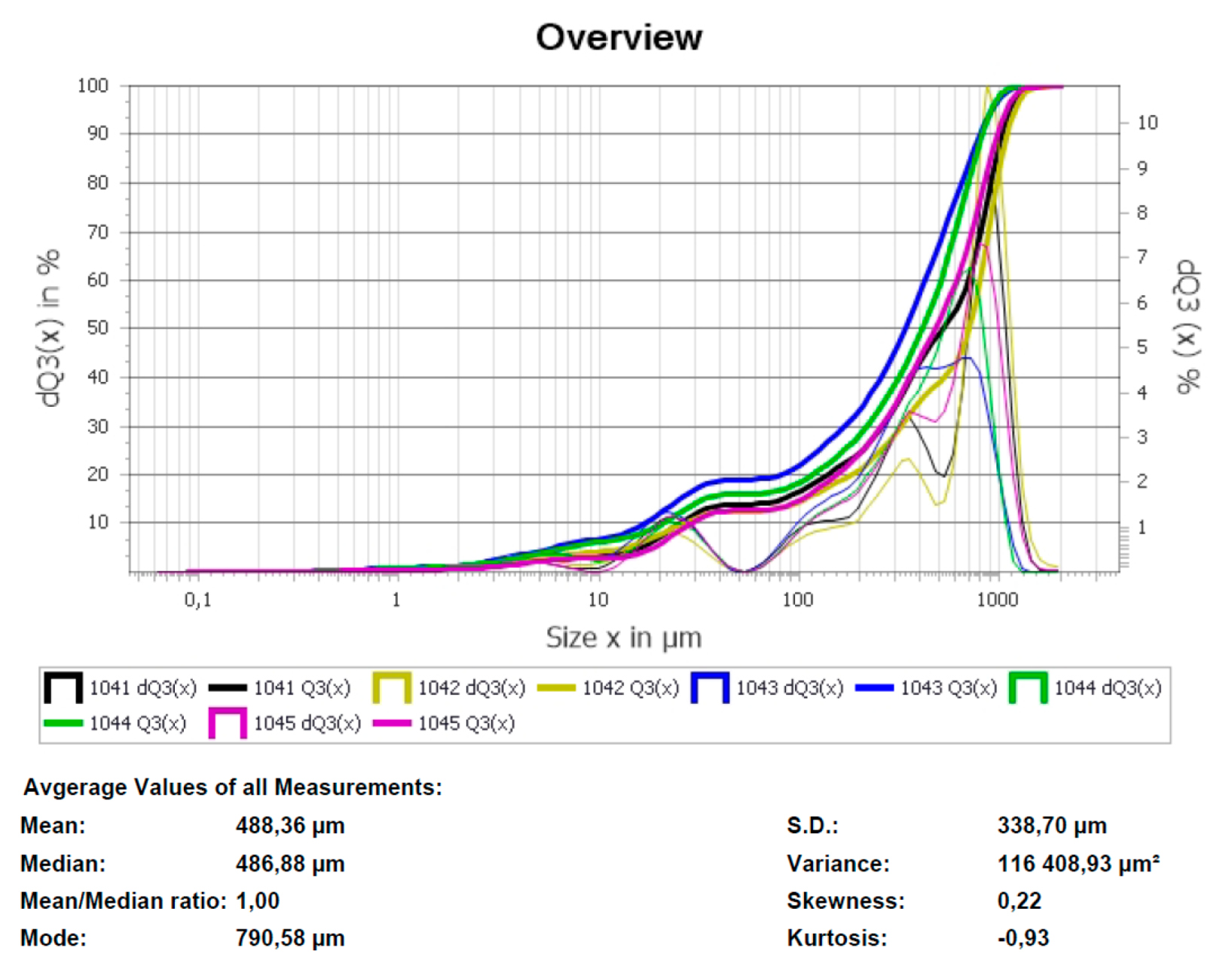
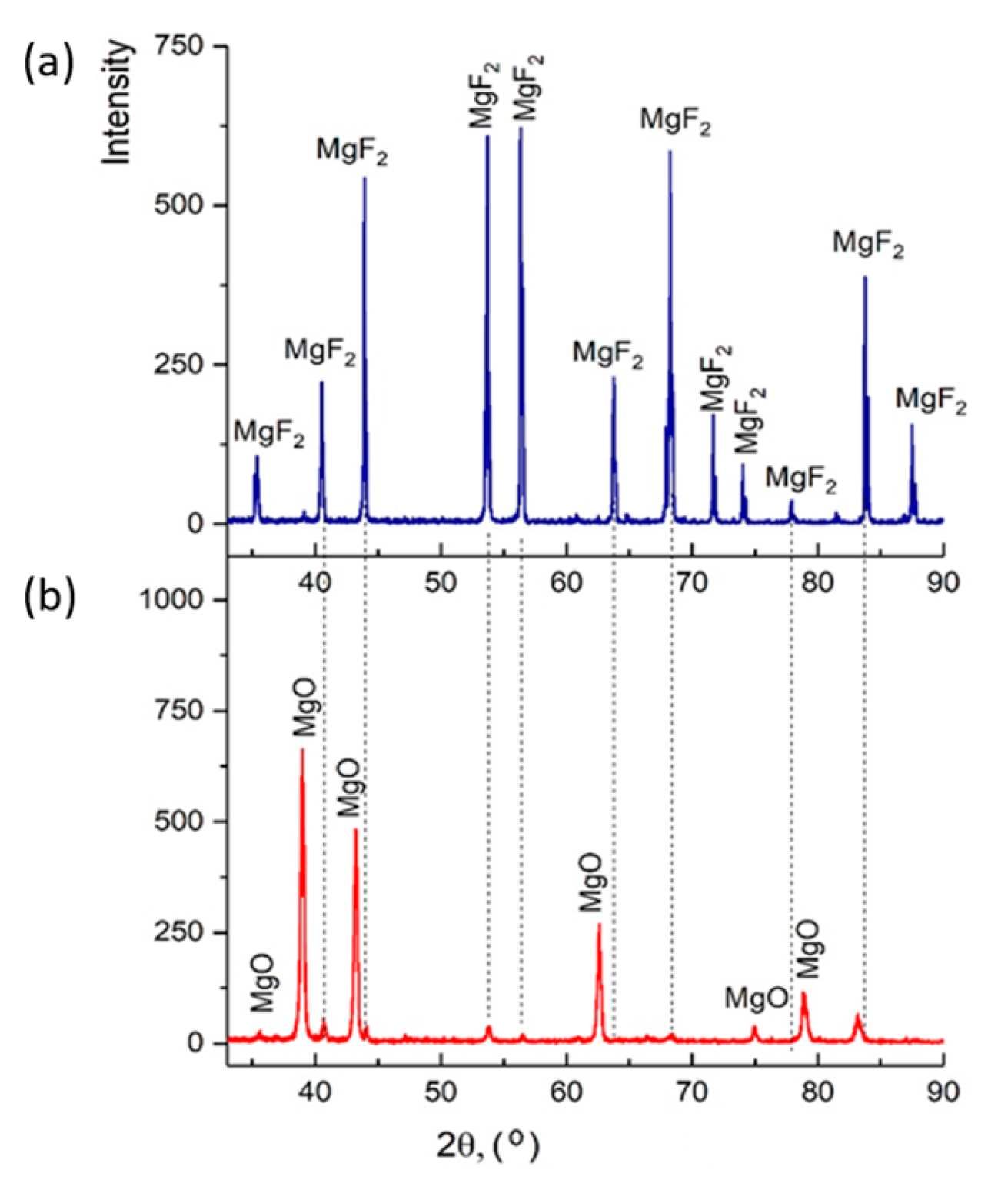
| Property | Value |
|---|---|
| Melting point, °C | 1240 |
| Boiling point, °C | 2230 |
| Density, g/cm3 | 3.1 |
| Room temperature solubility, g/100 g water | 0.012 |
| Name of the Indicator | Standard for Grade “Pure” | Actual Value |
|---|---|---|
| Mass fraction of magnesium oxide (MgO), %, no less | 97 | 99 |
| Mass fraction of substances insoluble in hydrochloric acid, %, no more | 0.02 | 0.01 |
| Mass fraction of water-soluble substances, %, no more | 0.8 | 0.1 |
| Mass fraction of loss on ignition, %, no more | 3.0 | 1.7 |
| Mass fraction of total sulfur (SO4), %, no more | 0.05 | - |
| Mass fraction of phosphates (PO4), %, no more | 0.005 | - |
| Mass fraction of chlorides (Cl), %, no more | 0.02 | - |
| Mass fraction of arsenic (As), %, no more | 0.0001 | - |
| Mass fraction of calcium (Ca), %, no more | 0.01 | 0.006 |
| Mass fraction of aluminum (Al), %, no more | 0.03 | - |
| Mass fraction of barium (Ba), %, no more | 0.005 | - |
| Mass fraction of iron (Fe), %, no more | 0.01 | 0.009 |
| Mass fraction of silicon (Si), %, no more | 0.03 | - |
| Mass fraction of copper (Cu), %, no more | 0.005 | - |
| Mass fraction of lead (Pb), %, no more | 0.002 | - |
Publisher’s Note: MDPI stays neutral with regard to jurisdictional claims in published maps and institutional affiliations. |
© 2022 by the authors. Licensee MDPI, Basel, Switzerland. This article is an open access article distributed under the terms and conditions of the Creative Commons Attribution (CC BY) license (https://creativecommons.org/licenses/by/4.0/).
Share and Cite
Sagdoldina, Z.; Shestakov, K.; Yermolenko, M.; Kylyshkanov, M.; Podoinikov, M.; Rakhadilov, B.; Kambarov, Y. Magnesium Oxide Production by Plasma Chemical Conversion from Fluorine-Containing Industrial Waste. Coatings 2022, 12, 1658. https://doi.org/10.3390/coatings12111658
Sagdoldina Z, Shestakov K, Yermolenko M, Kylyshkanov M, Podoinikov M, Rakhadilov B, Kambarov Y. Magnesium Oxide Production by Plasma Chemical Conversion from Fluorine-Containing Industrial Waste. Coatings. 2022; 12(11):1658. https://doi.org/10.3390/coatings12111658
Chicago/Turabian StyleSagdoldina, Zhuldyz, Konstantin Shestakov, Michael Yermolenko, Manarbek Kylyshkanov, Mikhail Podoinikov, Bauyrzhan Rakhadilov, and Yedilzhan Kambarov. 2022. "Magnesium Oxide Production by Plasma Chemical Conversion from Fluorine-Containing Industrial Waste" Coatings 12, no. 11: 1658. https://doi.org/10.3390/coatings12111658




